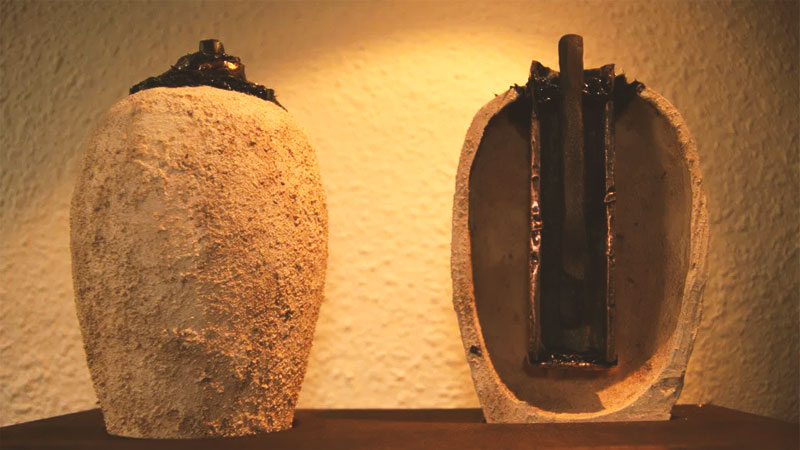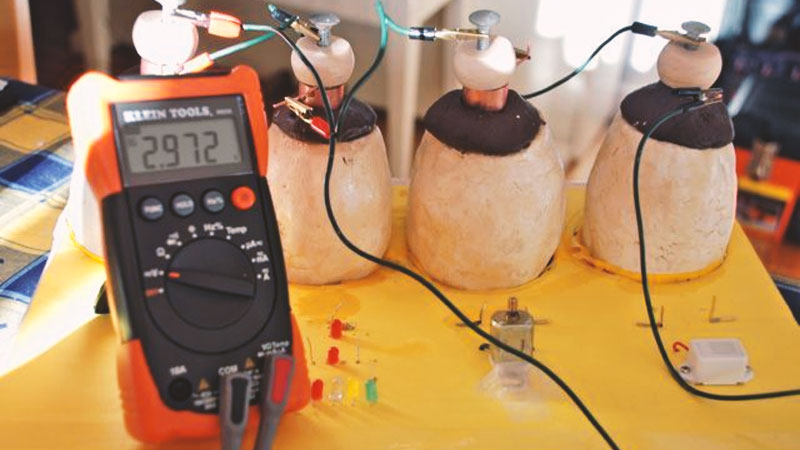In 1938, German archaeologist Wilhelm König found a strange-looking old clay jug, along with similar ones, as part of a collection at the National Museum of Iraq, which was attributed to the Parthian Empire, an ancient Asian culture that ruled most of the Middle East from 247 BC up to 228 AD.
These previously forgotten pitchers were considered unique when later, in 1940, König described the clay jar, dated 200 BC, as the oldest electric battery there is.
Those who have examined the jar closely say that there are a number of things that indicate that it is a “wet cell” or a “battery”.
The fascinating clay jug is only 14 centimeters high by 8 centimeters in diameter and its upper opening was sealed with an asphalt cap, which held a sheet of copper wrapped in a tube.

This tube was capped at the bottom with a copper disc, held in place by more asphalt, and a narrow iron bar was traversed by the asphalt cap of the upper and centralized opening of the copper pipe without touching any part of it. That’s why the old Iraqi clay jug was popularized as the “Baghdad Battery”.
If the bottle is filled with an acidic liquid such as vinegar, lemon or grape juice, it turns into a battery capable of generating a small amount of electric current. The acidic liquid allows an electron flow from the copper tube to the iron bar when the two metal terminals are connected. This is basically the same principle that was discovered by Luigi Galvani in 1786, almost 2,000 years later, and which Alessandro Volta successfully used in the first modern battery a few years later in 1799.
What was the Baghdad Battery used for?
To date, no written text has been found anywhere describing the usefulness of the Baghdad Batteries.

Traditional researchers suggest that the artifact was used to store and preserve scrolls, since the vial of the artifact was similar to the pots that contained the Dead Sea Scrolls, although if an electrolytic liquid were inside, it would invalidate any purpose of document storage.
This theory does not explain why all parts (copper pipe, iron bar) are needed, and their small size does not seem practical as a container for scrolls. There is no evidence that the copper pipe itself was a copper roll like that found among the Dead Sea Scrolls.
It was hypothesis that copper would have been inserted into the container because of its antimicrobial properties, and that the acid remnants found inside it were decomcomposition papyri, but this does not explain the iron bar or why the bar was separated from the copper tube.
Others explain the Baghdad Battery by saying that the Greeks and Romans used certain species of electric fish to treat pain, they literally put a live electric eel on their feet until they lay dormant for gout-caused pain treatments. Therefore, the battery may have been used medicinally as an immediate source of analgesic electricity, called Electroanalgesia.

Many researchers have conducted several experiments with baghdad battery models and found that it is capable of generating electricity between 1.5 and 2 volts. It doesn’t seem to be much, but it’s the same as much of the energy generated by our common active batteries, and if connected in series or in parallel they can generate larger currents and these batteries could be used to galvanize gold or silver, since the ancient peoples of Mesopotamia used a process called “gold with fire” for decorative purposes.
In 1978, Dr. Arne Eggebrecht of the Pelizaeus Museum in Hildesheim, Germany, conducted some experiments with replicas of the Baghdad Battery, using grape juice as an acidic liquid and thin layers of silver that resulted in electricity production.
On the television show Mythhunters, the presenters recreated the Baghdad Battery and proved that they are actually capable of retaining a load and galvanizing metals quite effectively.
Ancient Astronaut theorists suggest that the ancient Egyptians were very familiar with the Baghdad Batteries and, according to their theory, the batteries may have been used to provide light in the chambers of pyramids and other secret locations.

Some of Baghdad’s 12 original batteries are still stored in the National Museum of Iraq, which is currently closed due to the 2003 saque, which caused nearly half of its collection to be stolen.
We may never know its true nature, but no doubt people will continue to speculate about the purpose of the Baghdad Battery for a long time.

















